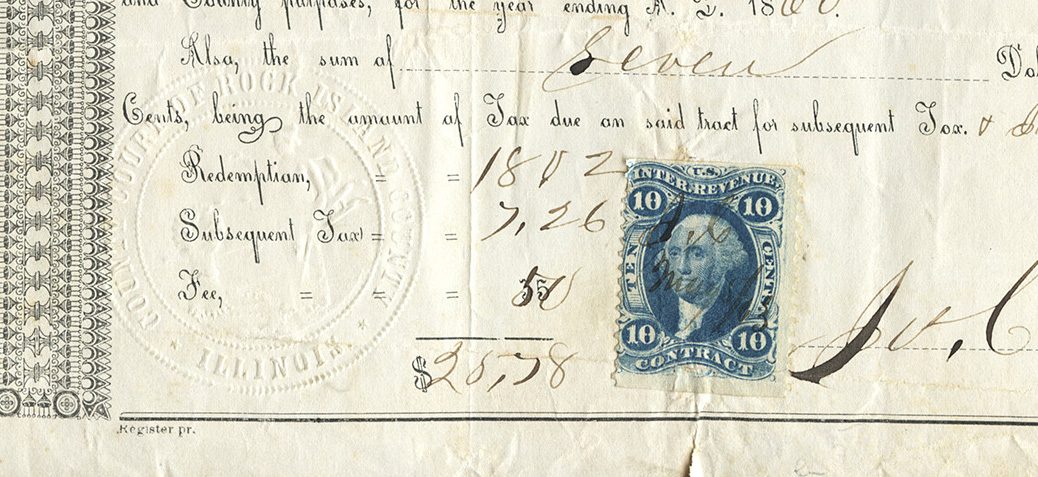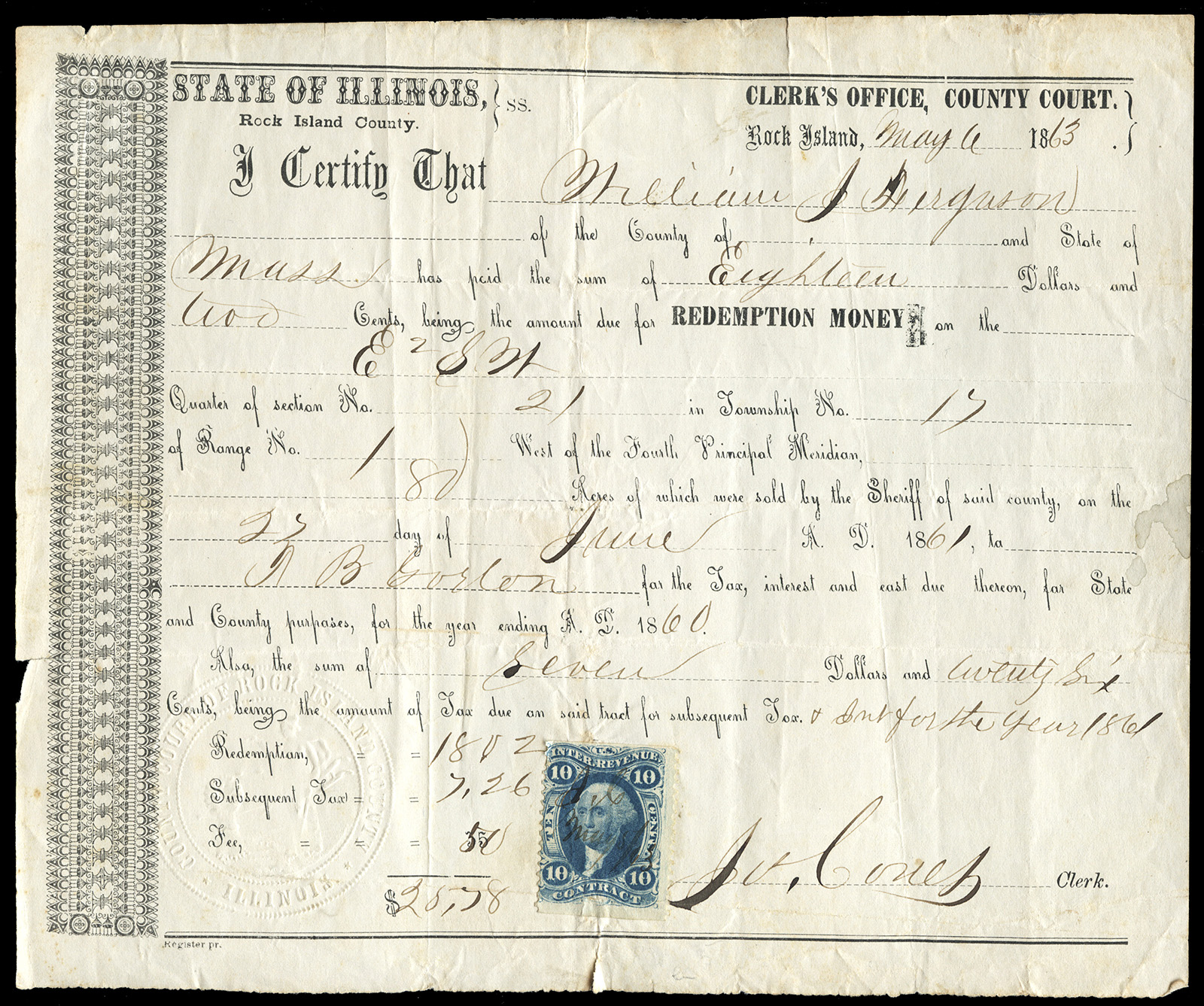
Yes, It’s Still Worth It Going Through Junk/Bargain Boxes
I still take the time to go through dealer junk/bargain boxes at shows because you never know what you might find.
At the MSDA show this past weekend in Glen Ellyn, IL, I spent the first hour and a half going through a dealer’s tubs of bargain material (“bargain” relatively speaking, as items were typically $5-10 each), as two of the tubs had a large amount of U.S. and Canadian revenue documents. The vast majority was material that was of no interest, mostly nondescript checks and receipts, althrough I found about a half dozen nice billheads for my yet-to-gain-momentum project of compiling a database/gallery of 19th century billheads.
Another interesting grouping, of which I pulled several examples, was a stack of various certificates and patent licensing agreements related to Manny’s Mowing and Reaping Machine from the 1860s.
There was a July 1, 1898 (first day of tax) check that I picked up for $2, and a nice 2-cent proprietary battleship used improperly on check, with APS cert, for $20.
But the “find” of the day was one I initially glossed over, did a doubletake, and then looked more closely. Neither the stamp nor the document will win any beauty prizes, as the several document folds cross through the stamp, but beggars can’t be choosers when it comes to low-population items. I’d never seen one before, and per Mike Mahler (the keeper of all things revenue document census-related), he’s only aware of one other reported example…
R34b (10-cent Contract part perforate, CV $700) paying 10 cents tax on an 1863 redemption certificate.
Per the tax rate tables, there are two possible certificate rates of 10 cents from around this period:
- “Certificate of profits, or any certificate or memorandum concerning property or accumulations of any incorporated company”, with a transaction amount of $10 to $50. That does not appear to be the case here.
- “Certificate not specified elsewhere” which was 10 cents through March 2, 1863, at which point it was reduced to 5 cents. The date of the document falls 2 months after that date, but it’s quite possible that in Rock Island, IL (total population just over 5,000 in 1860) they were unaware of the recent change in tax rate?
So the date is a bit off, but I can find no evidence of fakery, as the date and initials on the stamp match the hand of the document, and there is no evidence of lifting.
In the moment, at $5 I figured it was worth a flier, figure out the details later and let the chips fall where they may… I wasn’t about to pass up the possibility.
